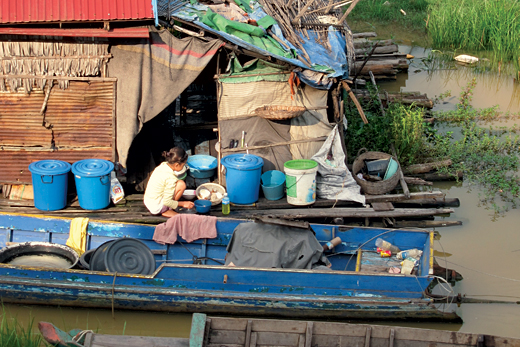Think about waking up tomorrow morning in a house with no running water. No hot shower for you to step into, no toilet to flush, no tap to fill the coffeepot, no sink to fill the dog's water bowl. The only water you ever have is what you collect from a community spigot, which sometimes works and sometimes does not. Or from a water truck, which often runs out before you reach the front of the line with your jerrycan. Or from a small lake nine miles away that serves as both water source and sewage dump. Every drop you use, you carry. You are well accustomed to the weight of water.
"There's no shortage of water in the world, only safe water," says April Rinne, a 1996 graduate of Emory College of Water.org, who returned to her alma mater in early March to speak about women, water, and microfinance.
She flashes a photo on the wall from a recent trip to Cambodia. A young girl is kneeling on the porch of a ramshackle waterfront stilt house in Siam Reap, a northern village. Two wooden rowboats moored with rope float beside her in a marshy, narrow river snaking by her home.
"Where do you think this girl and her family go to the bathroom?" Rinne asks, addressing a packed auditorium in White Hall. "I'm not sure, but I have a guess."
An astounding one billion people lack access to safe drinking water, says Rinne.
In developing areas, it is routine for human or animal waste to contaminate an entire village's water supply: One child with dysentery. One well that's too shallow. One latrine that floods.
Women bear the brunt of the world's safe water and sanitation crisis, but they also have the will and the social networks to create workable solutions, says Rinne, flashing to another photo of women in Bangladesh mapping out a water system for their village.
All they need is a little capital.

